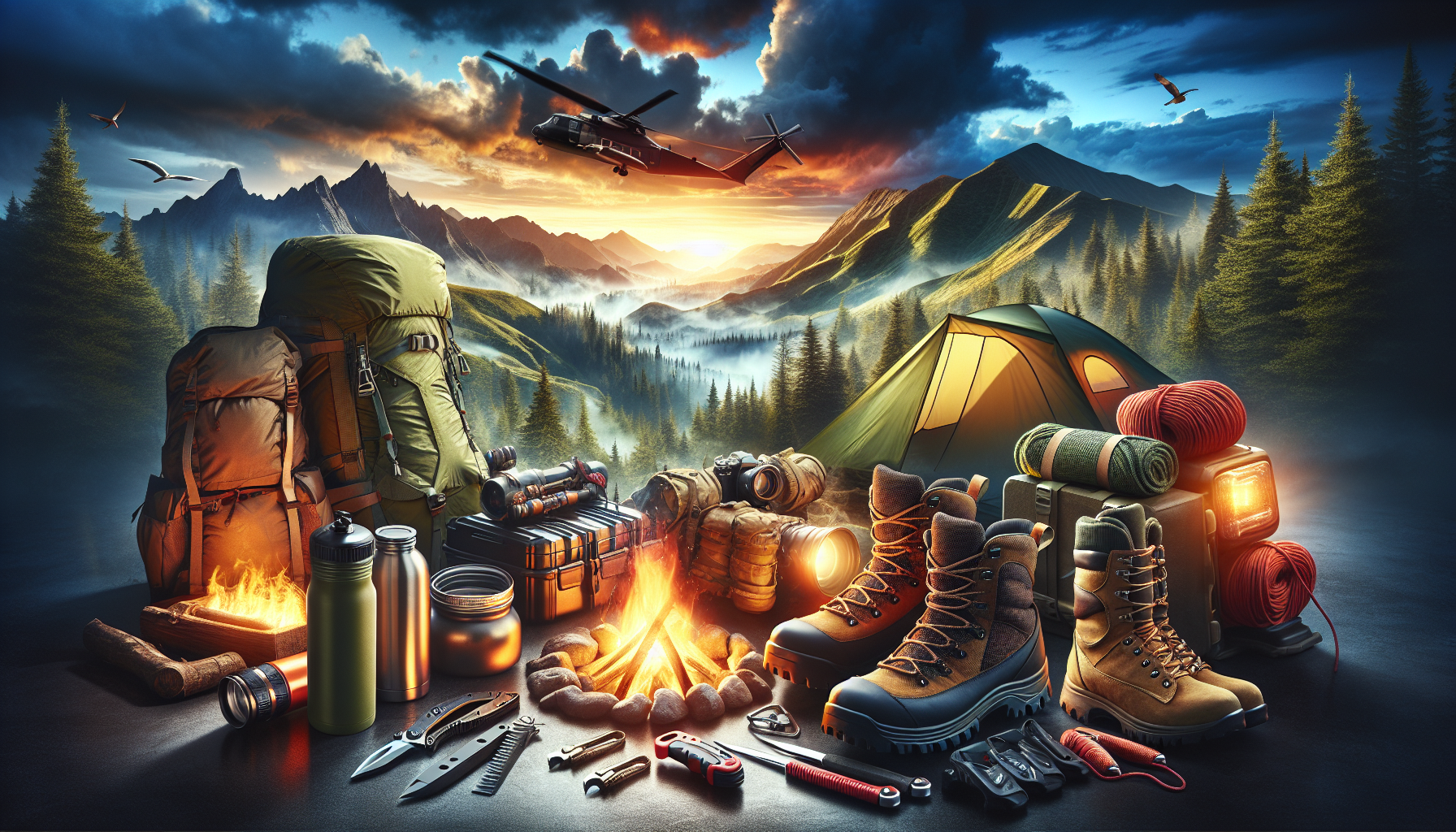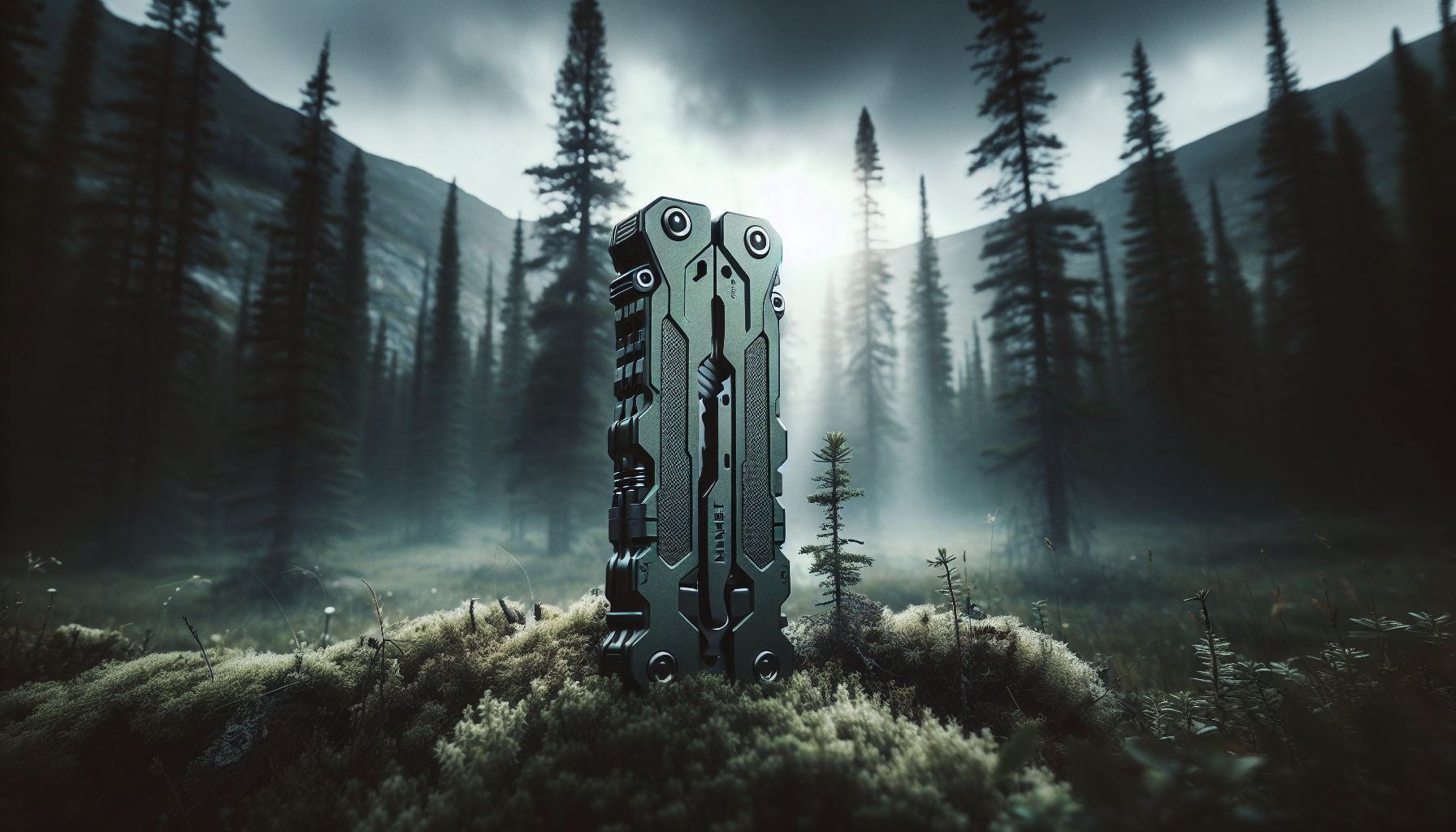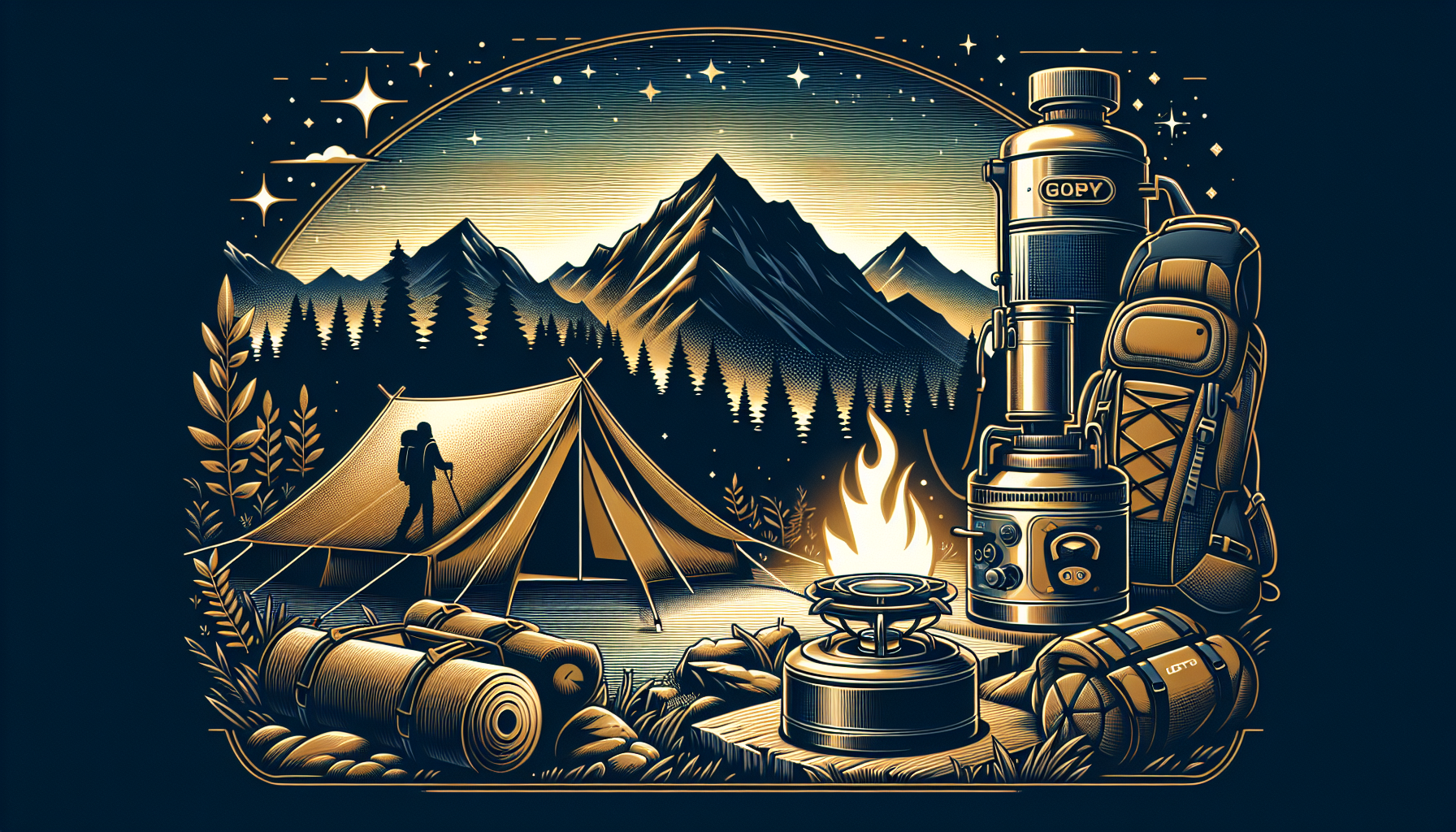Outdoor Survival Gear: A Guide For Camping In The Wilderness
Imagine yourself surrounded by nothing but trees, the sounds of chirping birds and rustling leaves filling the air, as you embark on a camping adventure in the great outdoors. To make the most of your wilderness experience, it is essential to have the right equipment by your side. In this article, we will explore the world of outdoor survival gear, providing you with a comprehensive guide to help you navigate the vast assortment of gear available, ensuring that your camping trip is not only enjoyable but safe and stress-free as well.
Essential Outdoor Survival Gear
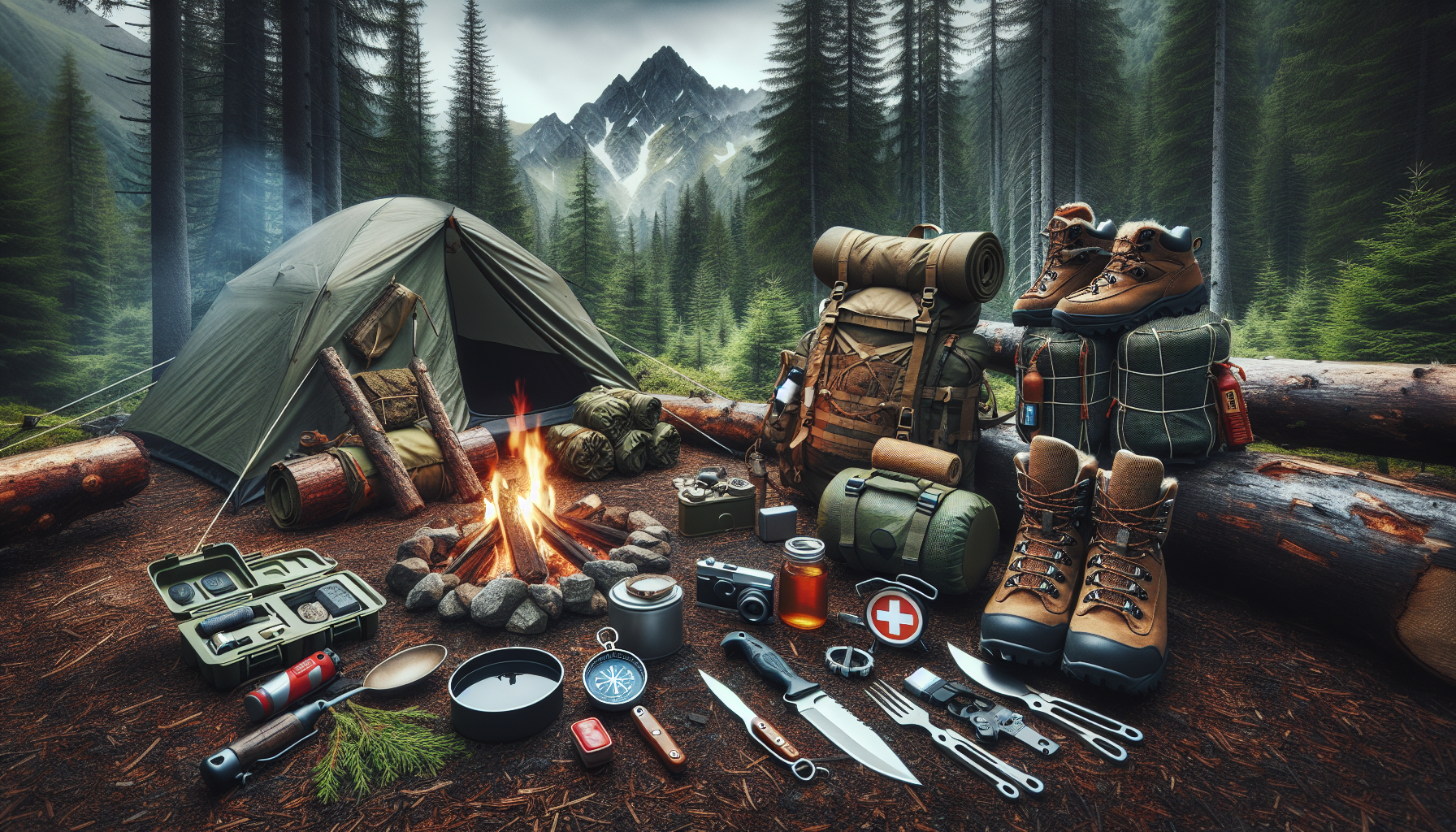
Tents
When venturing into the great outdoors, having a reliable tent is crucial for shelter and protection. Consider the weather conditions you will be camping in. If you plan to camp in colder climates, a four-season tent that can withstand high winds and heavy snowfall is essential. Determine the tent size based on the number of people who will be sharing it. Freestanding tents offer convenience and ease of setup, while non-freestanding tents are lighter and more compact. Check the weight and packability of the tent to ensure it is suitable for your backpacking adventures. Lastly, consider the type of camping you’ll be doing. If you’ll be camping in established campgrounds, a larger tent with extra features may be suitable. On the other hand, if you plan to embark on long hiking trips, a lightweight and minimalist tent would be more appropriate.
Sleeping Bags
A cozy and comfortable sleeping bag is a must for a good night’s sleep in the wilderness. The temperature rating of the sleeping bag is crucial in ensuring you stay warm throughout the night. Consider the climate you will be camping in and choose a sleeping bag with an appropriate temperature rating. Insulation type is another important factor to consider. Down sleeping bags are known for their excellent warmth-to-weight ratio, while synthetic bags offer better insulation when wet. The shape of the sleeping bag also plays a role in comfort and warmth. Sleeping bags come in mummy, rectangular, and semi-rectangular shapes. Think about the weight and packability of the sleeping bag, especially if you plan to backpack. Additional features such as draft tubes, hoods, and pockets can enhance your sleeping experience in the wilderness.
Backpacks
A reliable backpack is essential for carrying all your survival gear while keeping you comfortable on the trails. Choose a backpack size based on the amount of gear you’ll be carrying. A larger backpack may be necessary for longer trips or if you’re carrying gear for multiple people. Consider the weight of the backpack itself, as a heavy pack can quickly become tiring during long hikes. Look for backpacks with well-designed storage compartments to keep your gear organized. Durability and weather resistance are important factors to consider, as you’ll be exposing your backpack to the elements. Ensure the backpack provides proper fit and adjustability so that you can comfortably carry it for extended periods.
Navigation Tools
When exploring the wilderness, it’s crucial to have the right navigation tools to help you find your way. Carrying a map and compass is a traditional and reliable method of navigation. Familiarize yourself with basic navigation skills to effectively use these tools. GPS devices and handheld navigators can be valuable additions to your gear, providing accurate coordinates and tracking features. Consider using trail apps and GPS-enabled devices for additional convenience and real-time navigation. It’s also a good idea to learn natural navigation methods, such as reading the stars or landmarks, as a backup in case electronic devices fail or batteries run out.
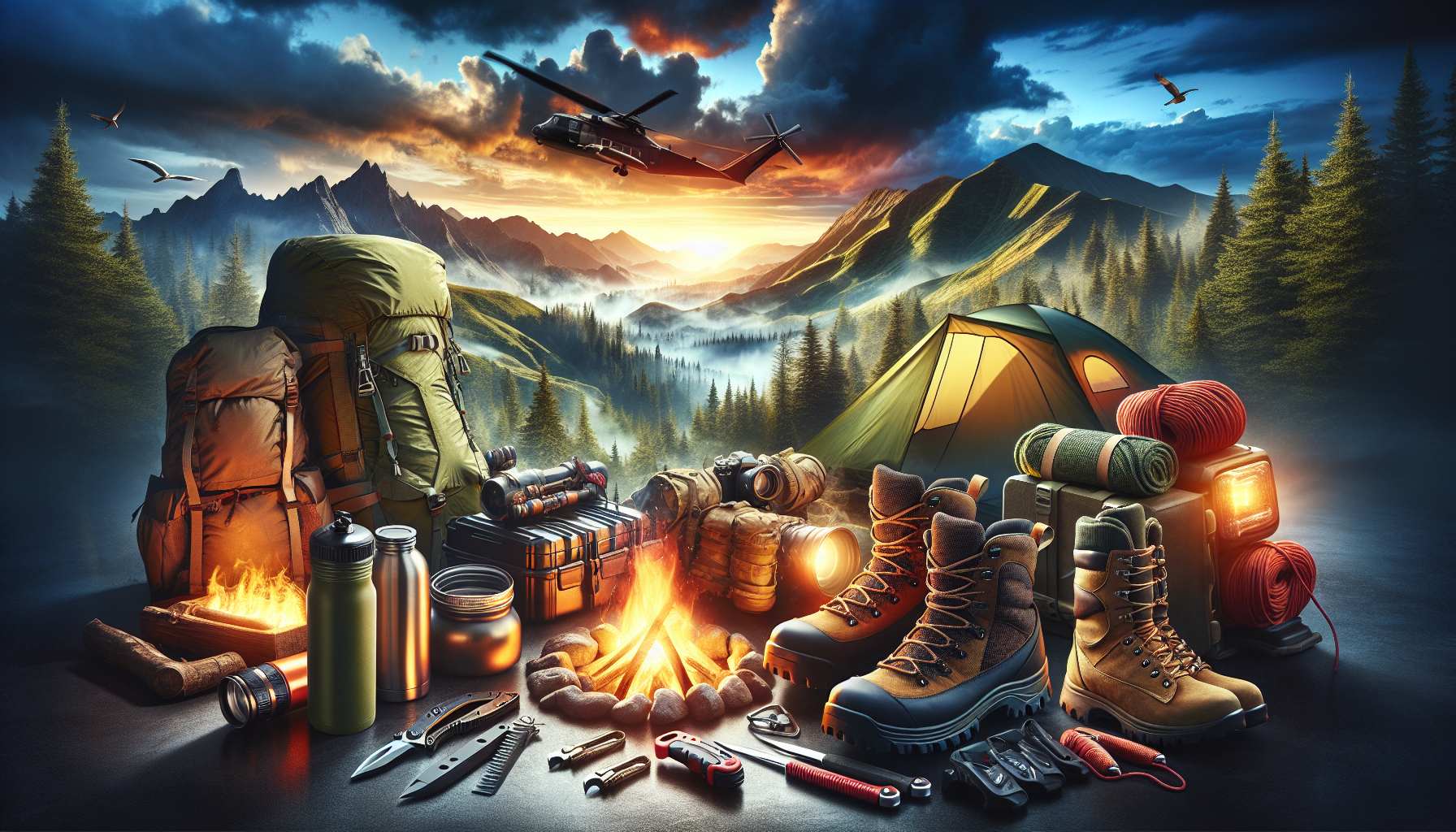
Water Filtration Systems
Clean drinking water is essential for your survival in the wilderness. Understanding the difference between water purification and filtration is important. Water purification systems use chemicals or UV light to kill bacteria and viruses, while filtration systems physically remove particles and contaminants. Different types of water filtration systems are available, including pump filters, gravity filters, and straw filters. Consider the water sources you’ll encounter in the wilderness and choose a filtration system that is suitable for those sources. Evaluate the filtration system’s capacity to ensure it can handle your water needs. Ease of use and maintenance should also be considered, as you’ll want a system that is user-friendly and easy to clean.
Multi-Tool
A versatile multi-tool is a handy companion for any outdoor adventure. These compact tools often come with a variety of functions such as knives, scissors, pliers, screwdrivers, and more. When choosing a multi-tool, consider the quality and durability. Look for reputable brands known for their reliable tools. Choose the right size and weight that suits your needs. A lightweight and compact multi-tool is ideal for backpacking, while a larger one might be more suitable for car camping. Evaluate additional features such as a saw, can opener, or wire cutters, depending on your specific needs. Regular maintenance and care will ensure your multi-tool remains in good working condition for many trips to come.
First Aid Kit
Staying safe and prepared for emergencies is crucial when venturing into the wilderness. A properly stocked first aid kit is essential for treating minor injuries and medical conditions. Include items such as bandages, adhesive tape, gauze pads, antiseptic wipes, and pain-relieving medication. Consider any specific injuries or medical conditions you or your companions may have and include necessary supplies. Evaluate the size and weight of the first aid kit to ensure it is portable and easy to carry. Check for expiration dates of medications and replace them when needed. It’s also advisable to consider taking a first aid/CPR course to equip yourself with the necessary knowledge and skills to handle emergencies effectively.
Headlamp or Flashlight
When the sun sets, having a reliable source of light is essential for navigating and performing tasks in the dark. Headlamps and flashlights are both popular choices, each with their own advantages. Headlamps provide hands-free illumination and are ideal for activities that require both your hands, such as setting up camp or cooking. Flashlights are versatile and can be used as a handheld or mounted light source. Consider the light output and beam distance when choosing between headlamps and flashlights. Battery-powered options are convenient, but rechargeable options offer long-term cost savings and are more eco-friendly. Check for different lighting modes such as high, low, and strobe. Consider the weight, durability, and water resistance of the light source to ensure it can withstand outdoor conditions.
Fire-starting Tools
Having the ability to start a fire is essential for warmth, cooking, and signaling for help in emergency situations. Fire-starting tools such as waterproof matches, lighters, or fire starters should be included in your survival gear. Waterproof matches are ideal for wet conditions, while lighters offer convenience and ease of use. Fire starters such as magnesium fire starters or fire cubes can provide a reliable and long-lasting flame. It’s a good idea to practice fire-starting techniques before your trip to ensure you can start a fire efficiently. Additionally, familiarize yourself with regulations regarding fire use in the areas you’ll be camping, as some locations may have restrictions or require permits.
Extra Clothing and Rain Gear
Being adequately prepared for changing weather conditions is crucial when spending time in the outdoors. Layering your clothing is an effective way to regulate body temperature in varying temperatures. Base layers made of moisture-wicking materials help keep you dry by pulling sweat away from your body. Insulating layers such as fleece jackets or down vests provide warmth, while outer shells protect you from wind and rain. Consider the weight and packability of your clothing, especially if you’ll be backpacking. Pack appropriate rain gear such as waterproof jackets and pants to keep you dry during unexpected showers. Don’t forget to consider additional gear like hats and gloves to protect yourself from the elements and ensure your overall comfort in the wilderness.
In conclusion, having the right outdoor survival gear is essential for a safe and enjoyable camping experience in the wilderness. From tents and sleeping bags to navigation tools and water filtration systems, properly equipping yourself with the necessary gear will ensure you’re prepared for any situation that may arise. Consider the specific factors outlined for each item, such as weather conditions, size, weight, and additional features, to make informed decisions when choosing your gear. With the right equipment, you can confidently embark on your outdoor adventures, knowing you’re well-prepared for whatever nature throws your way. Stay safe, have fun, and happy camping!

